長崎
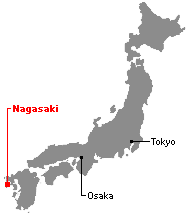
Nagasaki City is just about the westernmost big city in Japan. The location is prime for trade, historically at least, and the area developed with a huge Chinese and Dutch influence. During the sakoku period (鎖国) a small part of Nagasaki was open to foreign trade. Stepping foot on Japanese soil anywhere else meant a swift death.
What did this mean for food? Well, the area supposedly mixed Chinese, Japanese, and Dutch cuisine into one. Honestly, I found that the only real European thing was the castella cake, of which there is an abundance. The rest is an Asian fusion which, as expected, includes noodles.
This is champon, Nagasaki’s gift to the ramen world.
Champon, unlike other noodle dishes, is a one pot dish. Soup is boiled, noodles are dumped in the soup, and toppings are added. The word champon can mean a mix of things. It is often referenced as a bad formula for drinking. Beer before liquor, never sicker. More like beer before shochu before sake before highballs in Japan. Don’t champon!
But do eat the champon in Nagasaki.
Even Rilakuma is a fan. I was only able to eat at three of the dozens of shops, and would recommend Eiseiro as the top pick. It had a small-shop feel, while the others were massive Chinese restaurants that felt more like a banquet.
For an in-depth (and funny Engrish lesson) check out this link:
http://www.nagasaki.web-saito.net/changpong_en.html
By the way, of the dozen or so people I spoke with, most of them say Ringer Hut it their favorite. Go figure.
But what about ramen? Being Kyushu, you are sure to find a lot of good tonkotsu ramen shops. Most of the ramen is right around China Town. Not a lot, but enough for a tourist for sure. Check out this rad map!
Courtesy of Anna (http://nachans-noodles.blogspot.jp/).

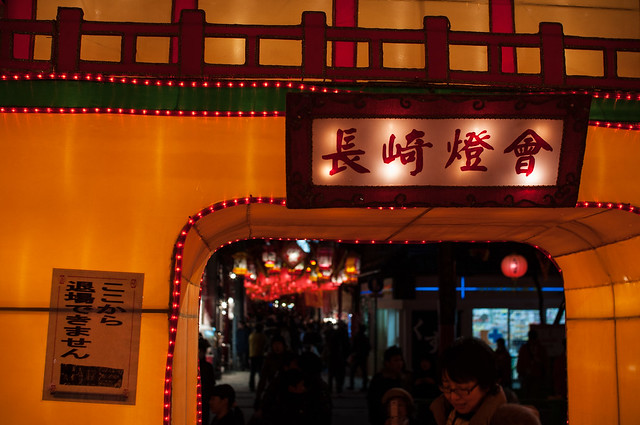
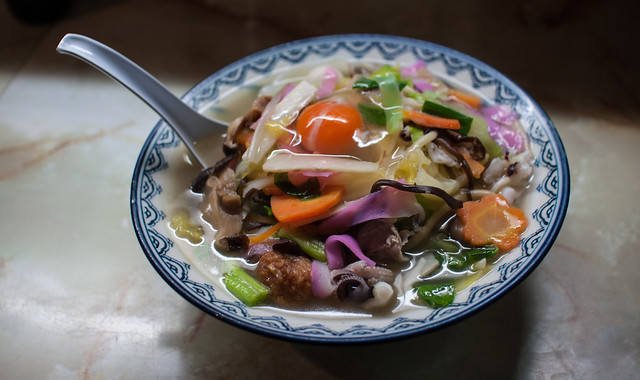
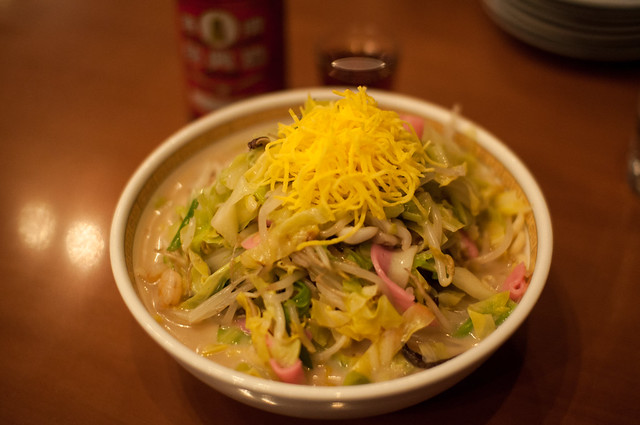
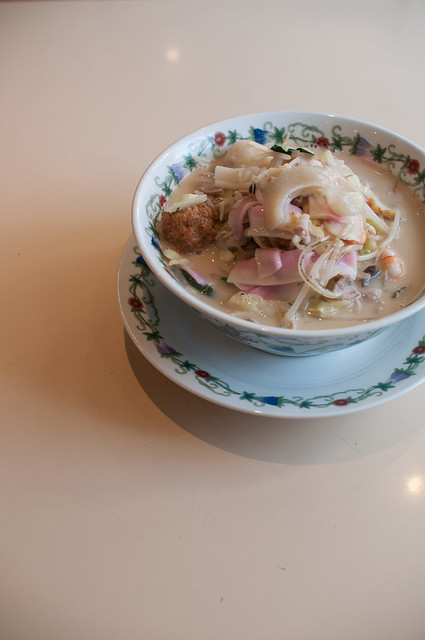
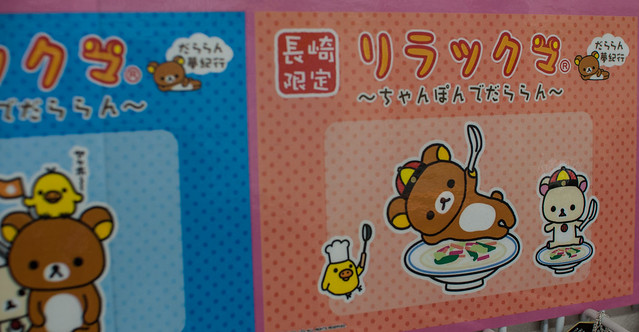
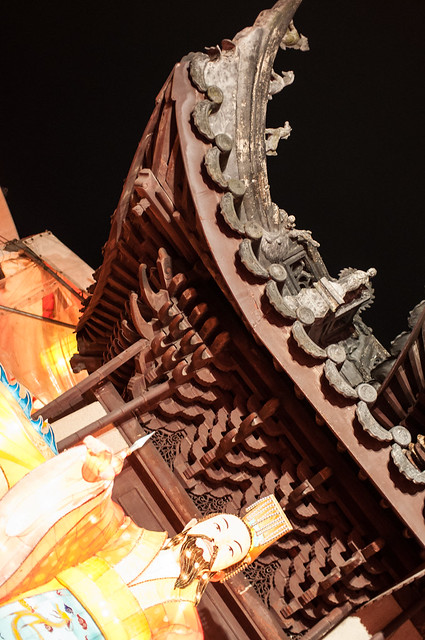
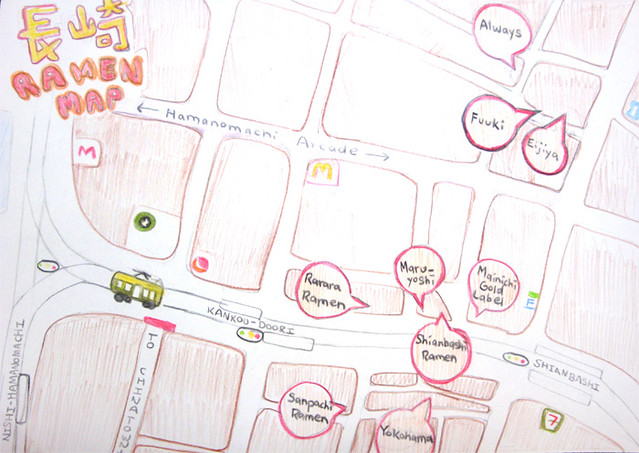
You must be logged in to post a comment.